Of the many conversations we had with our caseworker from the adoption agency, I remember one much more clearly than the others. During this phone call, our caseworker (who, by the way, was amazing) was role playing and asking questions to help us prepare for the day we would meet our daughter, Lydia. One of the questions was, “How will you respond if Lydia rejects one or both of you?” Looking back, my answer was so uneducated and void of substance. “Well, we will just do our best to make her feel safe.” There was a long pause, and then she said, “Yes, but how will you make her feel safe?” Another long pause (because I had absolutely no idea what to say). Sensing my embarrassment, she said, “Playful interaction, Bryson. The most effective way to reach a child in this scenario is through playful interaction.” The way she said it let me know this is something I should have known already. I should have. That’s the moment I realized I had a lot of catching up to do.
My inner monologue that evening went something like this:
Conscience: “Hey Bryson, have you noticed all those books your wife has been reading at night while you catch up on ‘important work things’?”
Me: “Yes, I’ve noticed. I think it’s great that she’s reading these books. But I have a company to run and lot of important work to do.”
Conscience: “Hey ‘Mr. My Work Is So Important,’ your wife also has a full-time very important career. And remember when you bombed that question today? Is your work more important than making your daughter feel safe during one of the most traumatic times of her life?”
My conscience served me well that day. I started reading. It took me a while to gain ground on the reading my wife had already done. But I was learning things that, unbeknownst to me at the time, would be essential in helping our daughter after we got home. Frankly, some of the books scared me. There were so many heartbreaking stories about kids with attachment issues who had been adopted. These attachment issues led to years of heartache and grief in their families.
And that’s where the rubber would meet the road for us. Attachment.
Our daughter had great difficulty forming a secure attachment to us. She resisted love and affection from us, she displayed indiscriminate affection to strangers in public, and for a long time every woman she saw she called “mama.” The first six to nine months that we were a family were honestly the most difficult of my life. That sounds so selfish because as hard as it was for me, it must have been exponentially harder for our daughter. This precious little person caught in the middle (experts say the trauma of adoption is equivalent to a kidnapping). She had no idea what was happening. Her concerning behaviors weren’t done intentionally, even though when I was tired and burned out it felt that way. We were bumping into her history, a history that she did not choose for herself.
Before we left for China, we told our family and friends what to expect from us after we got home. We discussed boundaries, cocooning, affection, etc. We told them hardest case scenario, it might be 6 months to a year before we stopped cocooning depending on our daughter’s needs. That sounded insane to us when we told our families. Yet there we were, in what we had labeled as hardest case scenario regarding attachment.
This is not the kind of stuff you think about when fantasizing about your first child. I always wondered what that moment would be like. The moment you meet your child for the first time. There is a picture at my parent’s house of my dad holding me right after I was born. His face is close to mine and his gaze is fixed on me, as if joyfully studying his newborn son.
I imagine there were lots of things going through his mind in that moment when his eyes met mine for the first time.
Whose eyes do I have?
Will I be introverted or outgoing?
What will I become?
Will I make him proud?
I’m pretty sure none of those questions was: What kind of trauma has my child experienced? Will my child be able to attach to us? Will my child be able to reciprocate love and affection?
We knew pretty quickly that Lydia had some attachment challenges. So we tried to do everything “by the book.” We cocooned hardcore (no one met Lydia’s needs besides my wife and me for months and months. That included grandparents, aunts, uncles, and our closest friends. To this day, we have strict boundaries in place regarding meeting Lydia’s needs and showing physical affection. I know some people think that’s ludicrous. Do the research, then we’ll talk.)
From all the reading we did, there are two things that really stuck with me. Both of them are from a book titled Attaching in Adoption by Deborah Gray. She says, “Children’s resistance to love is one of the hardest challenges of parenting these children.” She also says that for children placed under the age of four, attachment progress is usually noticeable after being home at least one year. But, if there is trauma or multiple placements in the child’s history, Gray says it could take longer to see progress.
Those were huge reality checks for me. When you’ve been home a couple of months and your family is in the trenches, you re-read those statements and you realize this is a marathon, not a sprint. You’ve only just begun. And at one year home, we felt the difference for our family, though we still have miles to go.
The books were great at educating and giving us context, but if there’s one thing that has been the most helpful, it’s that Mandy and I are unified when it comes to the big stuff (i.e. cocooning, therapy, boundaries, discipline, nurture, etc.). Being at odds with each other on even one of these things could have set our daughter back in a big way. Plus, with Lydia’s hypervigilance, she would have sensed if Mandy and I weren’t aligned. And if I hadn’t educated myself before we adopted, I don’t think we would have been on the same page. Why? Because I, and I think a lot of men, tend to take things as they come, figure things out along the way, and want to forge ahead, leaving the past behind. I learned very quickly that it doesn’t work that way with adoption. You must be intentional.
You have to go backward to move forward.
This became clear to me during a conversation I had with an acquaintance of mine who had just adopted as well. We were confiding in one another about how difficult it had been. He started lamenting to me that his wife wanted to bottle feed their little boy — a child whose chronological age is nearing adolescence and is perfectly capable of feeding himself. He said, “She thinks it will help him attach to us, but I think he needs to put the past behind him and move on.” And in the gentlest way I could, I said, “Actually, it probably will help him attach.” I started reciting what I had read… that a lot of children who are adopted didn’t receive the nurture that a securely attached biological child received. Often, these children need to regress to an infant like state so the neural pathways (connections in the brain that should have been embedded as an infant) can now be created. He just looked at me like, “Huh?” I gave him a list of books to read and he wrote them down. We haven’t talked since, but I hope things are going better. You have to go backward to move forward.
One thing that struck me about many stories of adoptive families who are struggling — and we’ve seen this in our experience with other adoptive families — is how long some families wait before getting help. Please hear this: It’s okay to get help. Adoptive families need help.
It drives me nuts when people say, “Hey, at least you skipped the infant stage! Haha! Should be smooth sailing now, right?” Actually, that couldn’t be farther from the truth. It is precisely because we skipped the infant stage that we need help. Those “sleepless” nights many had feeding an infant? That told your little one, “I will meet your needs. I will nurture you.” That rocking you did with your infant, that helped develop your child’s sensory system. When your child cried, and you soothed your little one, that did not spoil your child, it told her that her voice matters and that you’ll comfort her.
When your child misses out on all of these important “yeses” and encounters with you, you must go backward to move forward.
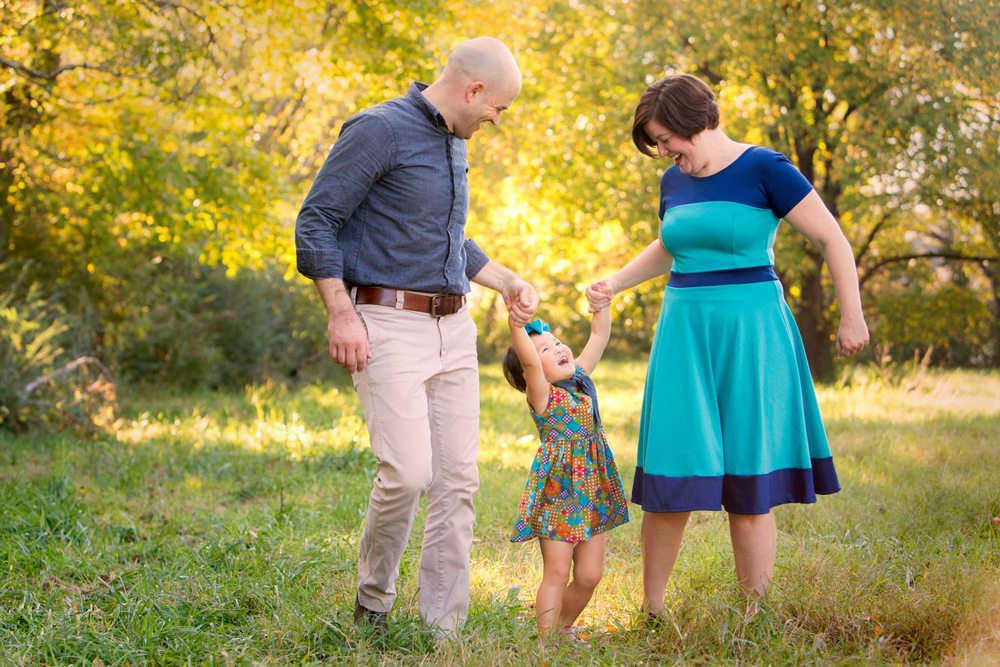 (image: Main Street Studios)
(image: Main Street Studios)
A common theme I see among those advocating for adoption is, “Trust God and it will all work out.” Unfortunately, we’ve seen many families go into adoption with this over-simplified, spiritualized mentality. Don’t get me wrong, trusting God is important. I need Him… EVERY. SINGLE. DAY. But trusting God doesn’t mean things will magically get better all of a sudden. Sometimes trusting God looks like swallowing your pride and finding professional help.
I think sometimes, men let pride get in the way, and resist outside, professional help. What if our pride gets in the way of our children’s healing? In our case, help came from an attachment therapist whose clinic is an hour and a half from where we live. Was it time consuming? Yes. Was it expensive? Yes. Did it save our family? Yes, I believe it did. We have learned so much from attachment therapy, and the progress our daughter has made is miraculous. We had to go backward to move forward.
I’ve told you about all the difficult stuff, but I haven’t told you about the joy Lydia brings into our lives. When my wife and I talk about Lydia, we just shake our heads, smile, and laugh. There are almost no words that can aptly describe who she is and the gift that she is to the world. But, I’ll try. Our Lydia is courageous, incredibly bright, astonishingly witty, awesomely stubborn, breathtakingly beautiful, totally goofy, overly dramatic, frustratingly talkative, fabulously magnetic, and, as she likes to refer to herself, is our one and only “Princess Daughter.” Most days, you can find her creating original songs, twirling in our living room, and declaring that she is her mommy’s snuggle buggle. I can’t imagine life without her.
We have come so far. I have come so far. Lydia has come so far. We had to go backward to move forward.
Dads, we play a critical role in attachment too.
……..
Bryson and his wife Mandy (a regular NHBO contributor) live in Northwest Arkansas with their Princess Daughter Lydia. They are in the process of adopting a son who they will name Barrett. Bryson owns and leads a creative agency specializing in video, Verge Videos. You can read more on his blog or their family blog.


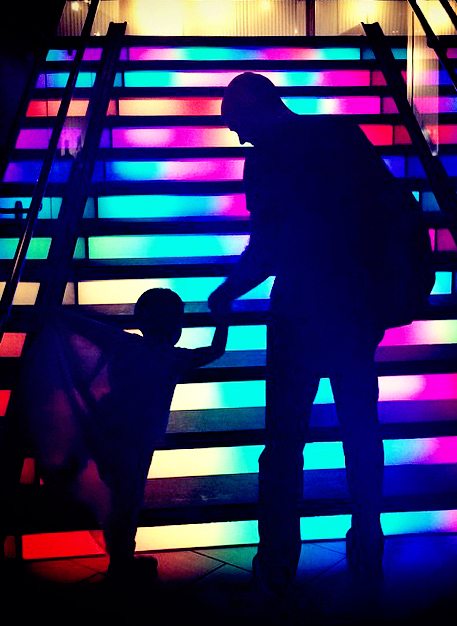


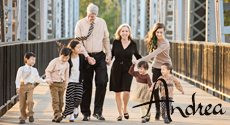
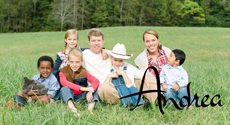


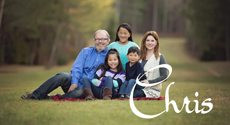
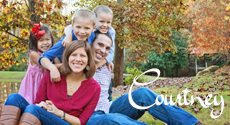

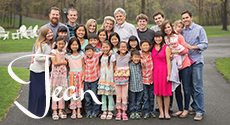



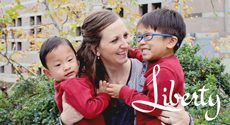
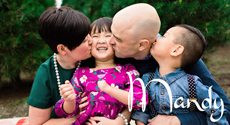









This is one of the most beautiful things that I have ever read. My husband and I are planning to begin the process of adopting from China in about 5 years. We have known countless people who have adopted and it is definitely a struggle (as you mentioned), but SO incredibly worth it (as you also mentioned). Thank you for sharing this. Praying for you, your wife, and sweet Lydia.
Can you share how the attachment therapy helped your relationship?
courtney, I wrote about our attachment therapy here. Let me know if you want more info. https://www.nohandsbutours.com/2015/04/29/making-the-decision-to-see-an-attachment-therapist-how-theraplay-is-helping-my-family/
Moms … please share this beautifully written post with your husbands before you adopt!!
My daughter came home from China 10 years ago, at only 8 months old, with attachment issues. She was very loved by her foster mom, who took care of her since she was one day old, so trauma was not expected. She immediately became insecurely attached to me, to the point where she screamed every time she was out of my arms (my showers became quick!!). She wanted nothing to do with her new dad, which I understand can be a common reaction. Her therapist diagnosed PTSD, likely from being abandoned as a one-day old, and then again when she was ripped from her foster mom and handed over to new people who looked, smelled, and sounded like aliens.
It took exactly one year to ease her fears, and in that year, my (now ex) husband decided that he didn’t want to be a part of it. As the author states, he read none of the books I gave him, and he thought that she should be able to move beyond her past. He rejected things like co-sleeping and the therapy games I played to let her know that Mommy will ALWAYS come back (even if I only went to the restroom!). He became frustrated to the point of wanting to disrupt the adoption. He pushed me to choose between them, and I chose her.
Today my daughter is the light of my life, and she is honestly more attached to me than the children I birthed. She is now sassy, smart, outgoing, popular among her classmates, and very self-confident. The process she and I went through to get to this point was hard work. Frankly, you can’t possibly understand the impact of attachment until you’ve been rocking a child for hours, as she screams and squirms to get out of your arms. There were many hours of wondering what I had done, and many well-meaning questions from friends and family asking if I had gotten in over my head.
Men (and moms too!), PLEASE understand that adoption is a process for the child as well as for the parents. I was a lucky mom in that my daughter was able to make it through her transition and firmly attach. I know many kids who have been home for years and are still dealing with their internal grief. If my experience sounds horrific to you, and if you aren’t willing to “start all over again”, going all the way back to the infant stage, you aren’t prepared to adopt.
Words of wisdom, Julie! It is a process for ALL. No doubt.
You are a wonderful man.
He is, indeed. -Mandy
Bryson,
Thanks for your sincerity and poignant words. What are some books that you found were the most transformative/infomational for you personally?.
Hi Simon, the most informative books for me were Attaching in Adoption by Deborah Gray and The Connected Child by Karyn Purvis.
Thank you for this. I am a single mom of three beautiful daughters from China. My oldest was adopted at 8 months of age and will be 13 years old in a week or so. There was not a lot of info on international adoption available back then. Two adoptions later, and the growing pool of info as well as stories so generously shared by APs, I have since realized, for example, that her reluctance to put her toes in the sand as an infant and toddler, or her refusal to wear jeans were, of course, sensory related. I’ve also realized that her high level of anxieties could in fact be attachment related, We have seen two therapists whom I believe were well-intentioned but never once broached the possibility that we have an issue with attachment (my daughter doesn’t present in a typical way–she is affectionate with me, smart, kind, but driven, I sense, by a deep fear. .. ). But I am now actively looking for an attachment therapist (anyone know of a good one in Southern California? We will even travel to Northern California for exceptional). All of this to get around to this question: in what book did you find the information about neural pathways? I have been reading about this lately myself and find it to make so much sense.
Thank you for sharing,
Suzanne
Hi Suzanne,
Bryson is on a work trip, but I can answer your question.
I would encourage you to contact Theraplay and see if there is someone trained in Theraplay (1-800-884-7914). Although your daughter is 13, some of the techniques are used on older children. I wrote a piece about our experience with our attachment therapist on this site. We wanted to find someone who is also trained in TBRI (http://www.child.tcu.edu/Resources/TBRI%20Alumni%20Contact%20Info%20for%20Website.pdf). It seems like there are some counselors trained in it in your general area, I think. If not, call TBRI. I think finding someone trained in TBRI and Theraplay was important for us.
We’ve done a lot of training and our therapist has educated us a ton. We might have learned it from her, Dr. Purvis’ training – I cannot remember.
Good luck! Feel free to reach out to us anytime. My email address is listed in my bio on the contributor page.
Also, are you in the Parenting With Connection Facebook group? It’s a great resource.
-Mandy
Thank you!